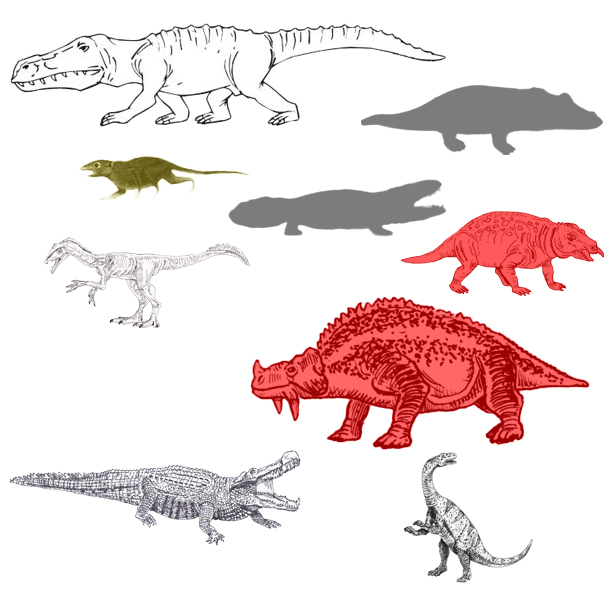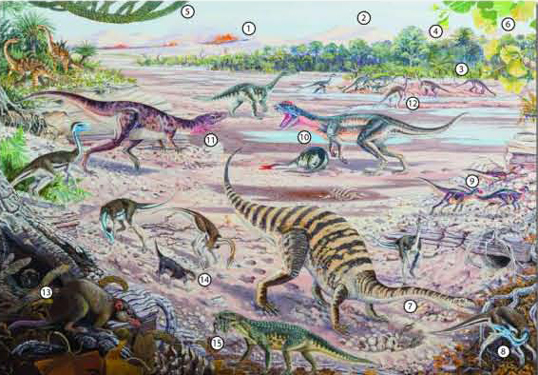Diapsid Fossil Teeth Provide New Information on Ecosystem Recovery
A new study examining diapsid fossil teeth from Lower Triassic sediments in South Africa has provided further evidence of the recovery of terrestrial ecosystems after the end-Permian mass extinction event. The research highlights the growing diversity of archosauromorphs following the extinction of parareptiles and therapsids.

For models and replicas of Permian and Triassic prehistoric animals: CollectA Deluxe Prehistoric Animal Figures.
Picture credit: Everything Dinosaur
Fossil Diapsid Teeth Study
The research team collected teeth from the Driefontein locality in Free State Province, South Africa. The strata represent Lower Triassic deposits (late Olenekian stage). The rocks are part of the Burgersdorp Formation and form part of the Karoo Basin, which provides an extensive geological record, crucially deposition that occurred before and after the end-Permian extinction event.
A total of 102 teeth were collected. The scientists identified 81 diapsid teeth with the remaining teeth classified as coming from temnospondyls. Analysis of the tooth morphology demonstrated that there was a greater diversity of archosauromorphs and other diapsids.
This research suggests that diapsids, especially archosauromorphs benefitted from the mass extinction event. They played an important role in the recovery of terrestrial ecosystems. Archosauromorphs filled many of the niches left vacant after the extinction of therapsids and anapsid reptiles.

For an explanation of the fauna and flora depicted in the image (above): Celebrating the Rise of South African Dinosaurs.
The Rise of the Dinosauria
The fossil teeth from Driefontein provide palaeontologists with an important window into how terrestrial ecosystems recovered. The largest mass extinction recorded in the Phanerozoic occurred approximately 252 million years ago. The end-Permian mass extinction event devastated both marine and terrestrial ecosystems. The Karoo Basin may yield further evidence to help palaeontologists to better understand how life bounced back from the mass extinction event. It may also help scientists to understand how the Archosauromorpha were able to gain an evolutionary advantage over other tetrapods. This may have ultimately helped the Dinosauria and their close relatives to dominate terrestrial habitats.
The scientific paper: “A diverse diapsid tooth assemblage from the Early Triassic (Driefontein locality, South Africa) records the recovery of diapsids following the end-Permian mass extinction” by Devin K. Hoffman, John P. Hancox and Sterling J. Nesbitt published in Plos One.
Visit Everything Dinosaur’s award-winning website: Visit Everything Dinosaur.

